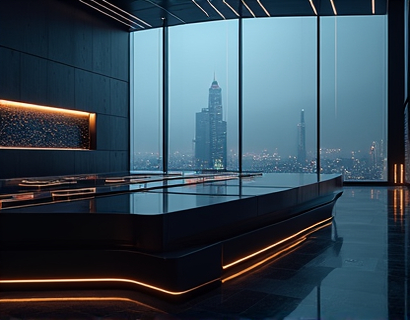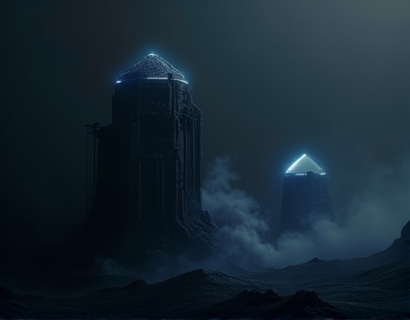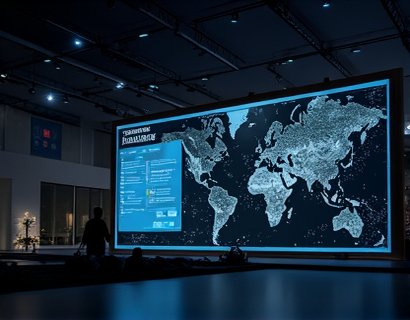Streamlining Web Development with Custom Placeholder Code Generators
In the fast-paced world of web development, efficiency and productivity are paramount. One innovative solution that has gained traction among developers, designers, and business owners is the custom placeholder code generator. This tool is designed to save time and enhance efficiency by providing customizable templates that can be used to generate placeholder website code. The primary goal is to create professional and visually appealing content without the hassle of manual coding, ensuring that website designs are both functional and attractive.
The concept of using placeholder code is not new, but the advancement in technology has made it more accessible and user-friendly. Traditionally, developers would spend a significant amount of time creating dummy content to test layouts and designs. With a custom placeholder code generator, this process is automated, allowing professionals to focus on more critical aspects of web development.
Benefits of Using a Custom Placeholder Code Generator
One of the most significant advantages of using a custom placeholder code generator is the time savings. By generating placeholder content automatically, developers can avoid the repetitive task of manually typing dummy text. This not only speeds up the development process but also reduces the likelihood of errors that can occur during manual input.
Another benefit is the consistency and professionalism that placeholder code brings to website designs. The generated content is uniform and visually appealing, which helps in maintaining a cohesive look and feel across different pages and sections of a website. This is particularly important for businesses that need to present a polished online presence to their customers.
Customizable Templates for Diverse Needs
The beauty of a custom placeholder code generator lies in its customizability. Users can choose from a variety of templates that cater to different types of websites, such as blogs, e-commerce sites, portfolios, and more. Each template can be tailored to fit specific design requirements, ensuring that the placeholder content aligns with the overall aesthetic of the website.
For instance, a business owner looking to create a landing page for a new product can select a template that features a hero banner, product grid, and call-to-action buttons. The generator will then produce placeholder code that includes dummy text and images, giving the developer a clear idea of how the final product will look.
Enhancing Developer Productivity
For web developers, the placeholder code generator acts as a powerful productivity tool. Instead of spending hours crafting dummy content, developers can quickly generate a basic structure and focus on implementing the actual functionality. This allows for a more streamlined workflow, where the initial design phase is expedited, and the development phase can begin sooner.
Moreover, the generator can be integrated into existing development workflows, making it a seamless addition to the tools already in use. This integration capability ensures that the generator complements other development tools, enhancing overall efficiency without causing disruptions.
Designers and Visual Content Creation
Web designers benefit greatly from placeholder code generators as well. Designers can use these tools to create visual mockups and prototypes, allowing clients to see a realistic representation of the final website. The generated placeholder content, including text and images, helps in conveying the layout and design elements more effectively than blank spaces or generic text.
Additionally, the ability to customize the placeholder content means that designers can experiment with different color schemes, typography, and layout configurations. This flexibility is invaluable during the design process, as it enables designers to refine their concepts and present their ideas more convincingly.
E-commerce and Online Retail
For e-commerce businesses, placeholder code generators can be a game-changer. Creating a functional and visually appealing online store requires a significant amount of planning and design work. With a generator, business owners can quickly set up a basic version of their store, complete with placeholder product images, descriptions, and pricing information.
This initial version can serve as a prototype to test user interactions, navigation, and overall user experience. Once the basic structure is in place, developers can focus on adding the dynamic elements such as payment gateways, shopping cart functionality, and inventory management systems. The placeholder content provides a solid foundation, making the development process more manageable.
Digital Agencies and Freelancers
Digital agencies and freelance developers can leverage placeholder code generators to deliver high-quality projects more efficiently. These tools enable them to provide clients with a quick turnaround on initial designs, which is crucial in a competitive market where clients often have tight deadlines.
By using a generator, agencies and freelancers can showcase their design concepts faster, allowing for quicker feedback and iterations. This not only satisfies client expectations but also helps in building a reputation for reliability and professionalism. The time saved can be redirected towards more complex tasks, such as optimizing performance and ensuring cross-browser compatibility.
Marketing Professionals and Content Creators
Marketing professionals and content creators can also benefit from placeholder code generators. When developing landing pages or promotional sites, having a quick way to generate placeholder content can accelerate the creation process. This is particularly useful for A/B testing different design elements or copy variations.
For example, a marketing team working on a campaign can use a generator to create a landing page with placeholder text and images, allowing them to test different headlines, calls-to-action, and visual elements. Once the optimal combination is identified, the actual content can be implemented, ensuring that the final product is both effective and engaging.
Technical Considerations and Best Practices
While placeholder code generators offer numerous benefits, it is essential to understand the technical aspects to use them effectively. Most generators produce HTML, CSS, and sometimes JavaScript code that can be directly integrated into a website. However, it is the responsibility of the developer to ensure that the generated code is clean, well-structured, and follows best practices.
One key consideration is the use of semantic HTML elements. Placeholder text should be placed within appropriate tags such as <p>, <h1> to <h6>, and <div> for sections. This not only improves the accessibility of the website but also helps search engines understand the content structure.
Additionally, while placeholder images are useful, it is important to use low-resolution images to keep file sizes small. This ensures that the generated code does not significantly impact page load times. Developers should also replace placeholder images with high-quality, optimized images once the website is ready for launch.
Integration with Development Tools
The integration of placeholder code generators with other development tools can further enhance the web development process. For instance, integrating the generator with CSS frameworks like Bootstrap or Tailwind CSS can provide pre-styled placeholders, saving time on custom styling.
Moreover, combining the generator with version control systems like Git allows developers to manage different versions of placeholder code, track changes, and collaborate more effectively. This is particularly useful in team environments where multiple developers are working on different aspects of the project.
Customization and Flexibility
One of the most appealing aspects of custom placeholder code generators is their flexibility. Users can customize not only the layout and design elements but also the type and quantity of placeholder text. For example, a blog platform might require different placeholder text structures compared to an e-commerce site.
Some advanced generators allow users to input their own content or follow a specific format, providing even greater control over the placeholder content. This level of customization ensures that the generated code aligns perfectly with the intended use case, making it a versatile tool for various web development projects.
Conclusion
In conclusion, custom placeholder code generators are invaluable tools for streamlining web development. They offer time savings, enhance productivity, and ensure that website designs are both functional and visually appealing. Whether you are a developer, designer, or business owner, incorporating a placeholder code generator into your workflow can significantly improve your efficiency and the quality of your projects.
By leveraging these tools, professionals can focus more on the creative and technical aspects of web development, leading to better outcomes and higher satisfaction for both clients and users. As the web continues to evolve, such innovative solutions will play a crucial role in maintaining a competitive edge in the digital landscape.











































